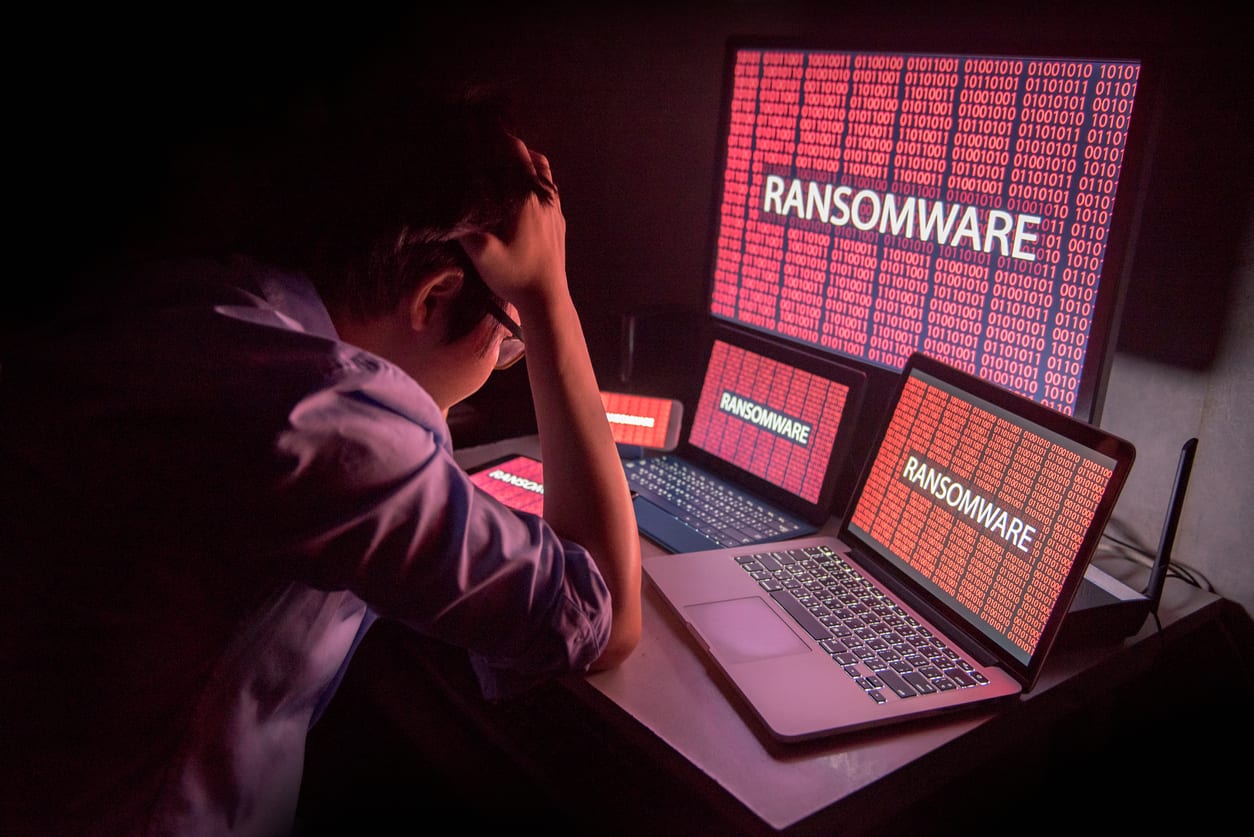
Ransomware attacks. Hackers encrypt all of your data and require a fee in order to have it decrypted.
As of April 2019, there were over 1100 variants of this tactic preying on users and companies. Ransomware attacks are terrifying. All of your important data is missing, and companies often have to pay thousands of dollars in order to get it back. And it hits close to home; recently, a ransomware attack shut down Baltimore City’s servers.
Luckily, there are ways to minimize the risk of a ransomware attack. In the case of ransomware, “an ounce of prevention is worth a pound of cure.”
With that in mind, here are five ways to prevent getting devastated by a ransomware attack.
Multiple System Backups
The more consistently you back up your important data, the less likely you are to have mission-critical information irreparably lost in the event of an attack. It’s also important to maintain your backups in an offsite space to make it more difficult for hackers to access. Multiple backups are hugely important to add a level of redundancy to your information. Missing a few backups may not seem like a big deal until you’ve been hacked and all that you’re left with is an old, out-of-date backup.
Xecunet offers several options when it comes to cloud backups. Our xCloud solutions offer public, private, and hybrid cloud options. These solutions can all grow with your business.
Additionally, to keep your backups safe, it’s important to include some sort of firewall protection.
xCloud offers both a physical and a virtual firewall. The virtual firewall provides ingress and egress rules, port forwarding, and optional load balancing for all of your virtual machines. Our physical firewall allows you to implement your own physical hardware for increased security. In this scenario, any firewall appliance from any firewall manufacturer can be physically connected to your xCloud infrastructure. Additionally, Xecunet offers Managed Cisco Firewall solutions.
Continuous Monitoring
Your IT network should be monitored continuously to catch a ransomware attack as early as possible. Part of your network monitoring should include frequent security scans to watch for any suspicious activity. The truth is that knowing how to prevent a ransomware attack boils down to preparation and early awareness through continuous monitoring.
Part of continuous monitoring is to ensure that all software is updated on-time. Outdated software can leave holes or vulnerabilities unpatched that allow a hacker access to your system. Continuous monitoring means that any vulnerabilities in your software are patched as soon as they are noticed. Xecunet understands the importance of monitoring your network. We offer a hassle-free, 24/7 service that monitors your connection for ping, latency, and utilization.
Anti-Malware Software
Investing in anti-ransomware defenses can also work toward minimizing ransomware risk. These solutions generally work by seeking to prevent the operation of ransomware programs on your machine in the first place; this tactic is known as early threat detection.
Early threat detection functions exactly as its name would suggest – the solution monitors your network for hackers and intrusions and notifies you as soon as they occur.
Prevention and early threat detection are all well and good. But what actions can you take after an attack has already begun? While it is much more difficult to stop an attack once it has started than it is to prevent it in the first place, certain software programs can remove a computer from the network, initiate a scan, and notify the IT department. If an attack does occur, they’re purposed to allow the release of your data without payment of the ransom fee.
Access Control
Too often access control is underestimated as part of a strategy on how to prevent a ransomware attack. If you give one employee free-for-all access to your entire system, you could be setting yourself up for failure. If that employee falls for a phishing email, a hacker could have complete access to your entire system.
Access control can limit a ransomware attack to just one computer or a few systems (versus allowing the attack to access the data of your entire business). A great access control strategy is to limit your employees to only the information they need – no more, no less.
You can also prevent your employees from accessing the internet publicly. Xecunet offers private line internet which bypasses the internet used by the public and instead connects your company directly.
Great Employee Training
Ransomware attacks typically start with a phishing email. Phishing emails scam your employees into giving out personal information like passwords, usernames, even credit card information. Because of this, employee training may be the most crucial part of how to prevent a ransomware attack.
Employees should be well-trained on the signs of a phishing email, what websites and links to avoid, and strong password security. If you discover that one of your employees is using the infamous “password1234,” then more training is probably needed.
Employee training can boost the security of your organization in almost every way. They should understand email safety practices. Unknown attachments should never be downloaded via email, and unknown email addresses should not be opened. If you’re worried that employee training isn’t enough, you can set up your mail servers to reject the email addresses of known spammers.
Don’t Leave the Cybersecurity of Your Company to Chance.
If you’re worried about your company being the next target of a ransomware attack, Xecunet can teach you how to prevent a ransomware attack. Our managed IT services offer continuous monitoring, expert guidance, and comprehensive security and backups to prevent a ransomware attack. If you need to increase the security of your organization, contact Xecunet today.
